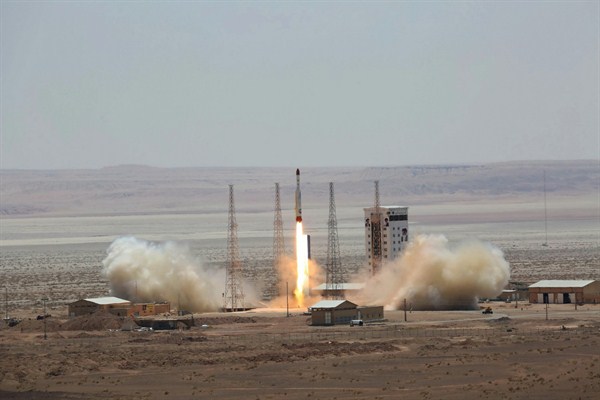After a four-year pause, Iran resumed its satellite program earlier this year, although two attempted launches in January and February both failed, followed by a third failed launch in late August. Together, they are a major setback for a space program that has long been hampered by the strains of international sanctions, including the ones these tests provoke, like the latest U.S. sanctions on Iran’s space agencies imposed this week. Even though a failed test is an opportunity for Iranian engineers to troubleshoot their rocket designs, the series of failures this year demonstrate the challenges that Iran must overcome before it can realize its civilian and military ambitions in space.
In 2009, Iran successfully placed into orbit its first satellite on an indigenous satellite launch vehicle, or SLV, making it the ninth country in the world to do so. Despite the fact that the crude Omid satellite weighed just 27 kilograms—barely 60 pounds—the launch marked the first step of an ambitious space program that aimed to put into orbit larger satellites of greater civilian and military use. In the decade since then, Iran has placed three additional satellites into orbit, all small experimental designs like the Omid, demonstrating the country’s nascent space capabilities. Yet its ambitions are held back by the rocket design it relies on.
The Safir SLV, used to launch the Omid and other Iranian satellites, is derived from the liquid-fueled Shahab-3 ballistic missile, which constitutes the bulk of Iran’s long-range, conventionally armed missile arsenal. The Safir’s design is an evolutionary dead-end with little room for payload growth, making it incapable of delivering satellites much larger or heavier than the Omid into low Earth orbit, let alone beyond. In other words, the Safir SLV sets hard limits on what Iran’s space program can really achieve.

